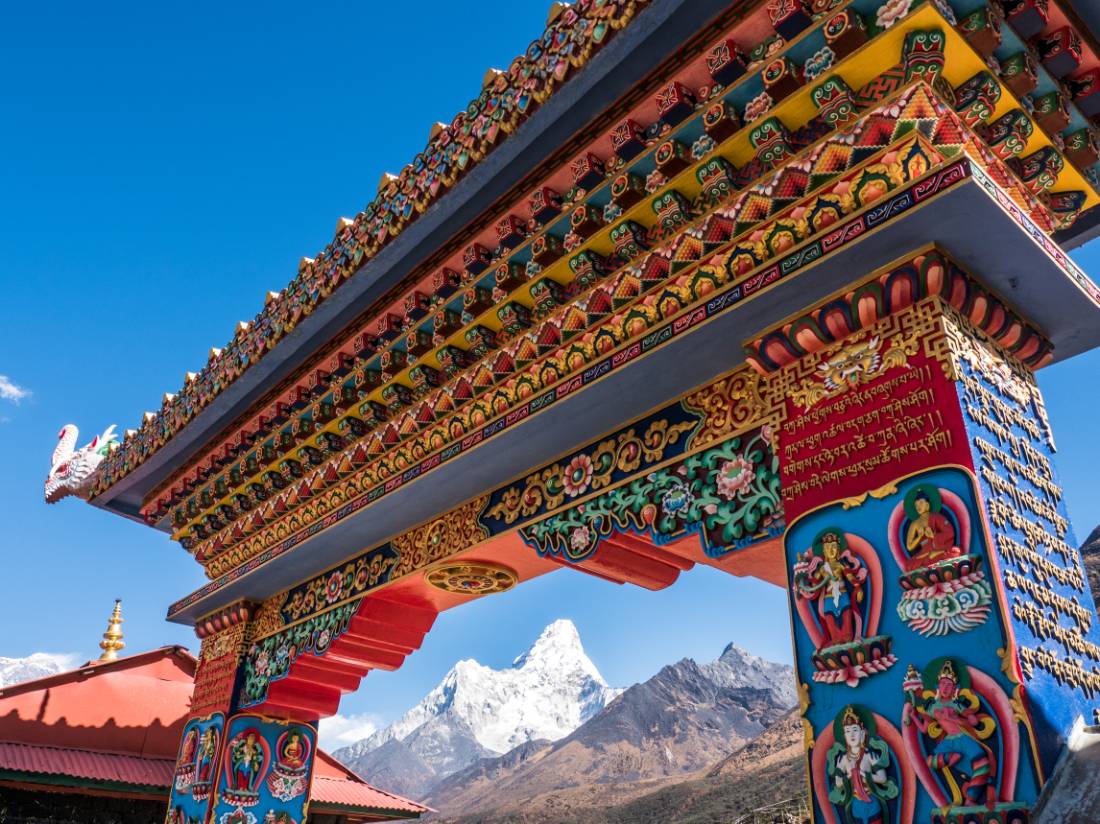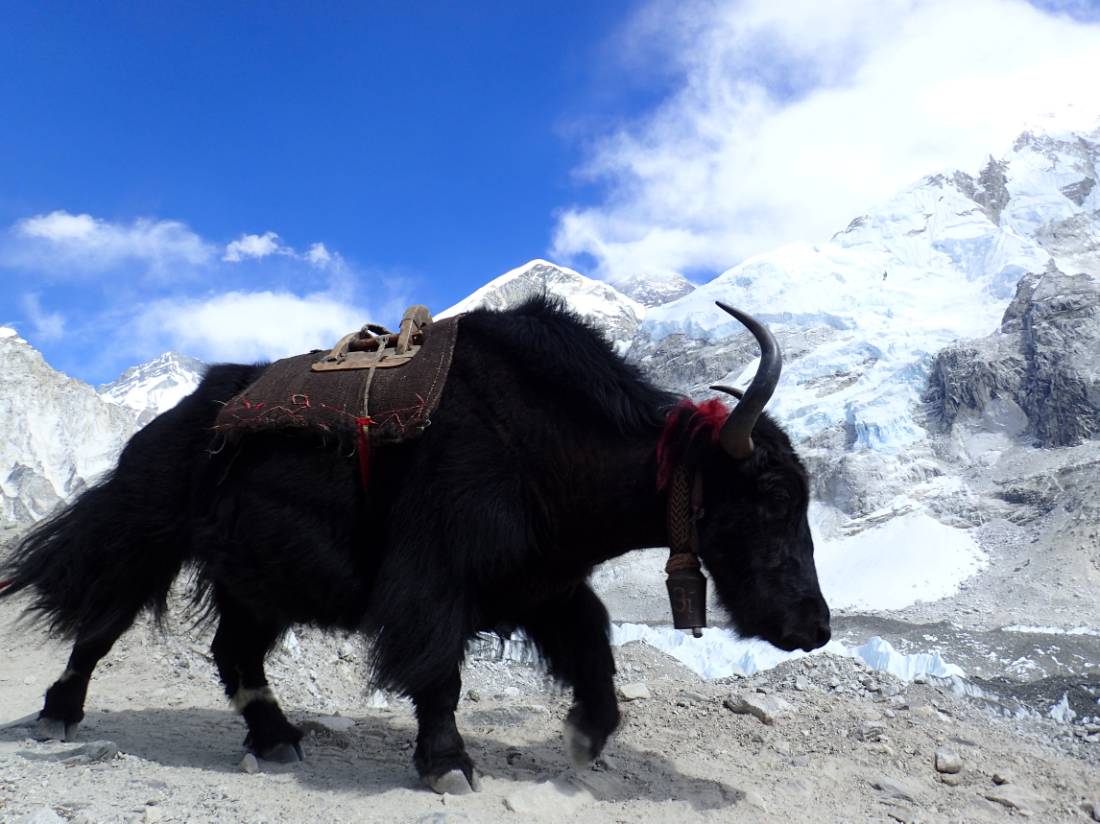Blog home / How Hard is it to Trek to Everest Base Camp?
If you’re like us, you have a mantra: work, save, travel, repeat.
And as you repeat that wonderful cycle, a few adventures will naturally drift to the top of your list. These are the big treks – the ones you don’t just save money for but the ones you save your entire being for. Your strength, your motivation, your enthusiasm – and your camera memory cards. And none is higher on the list than the classic Everest Base Camp trek.
But how hard is the Everest Base Camp trek? Can the average active person do it? What are the best tips for success? What should I know before I book it?
When you travel with a company that has been operating the Everest Base Camp Trek for as long as we have (since 1975) you can succeed. But a well-paced, high-quality trek will only get you so far, you still need to put in the work to be trek-fit.
To increase your chances of completing the Everest Base Camp trek there are a few things that you must do, starting as much as three months before you fly to Nepal. Our advice comes from our nearly 50 years of experience helping people achieve their Everest Base Camp goal and introducing them to this beautiful part of the world.
The Everest Base Camp challenge in numbers
First, let’s break down the challenge to see if it is something you think you can achieve:
• a well paced trek takes a minimum of 13 days, with all the trek days at altitude (altitude is typically anything above 2,440m/8,000 feet). Be wary of shorter treks as in our experience they ascend too quickly or compromise on rest days, which makes the challenge much harder. Remember, you might only get one shot at this;
• each day you will walk between 4 to 8 hours at altitude, depending on your fitness (even if you are fit, we advise you to walk slowly);
• be prepared for below freezing conditions between December and February at night, especially once you get over 4000m;
• the trek distance is roughly 130km round trip, which might not seem long over 13 days, but you are at altitude and some of the 13 days are used to rest and acclimatise; and
• you are aiming for the high point at Kala Pattar (5545m/18,193 feet). Kilimanjaro is 5,895m
If you feel comfortable with these numbers then you're a good candidate for reaching Kala Pattar, the traditional viewpoint for Mount Everest.

Getting fit for the Everest Base Camp trek
If you are of reasonable fitness, you can trek to Everest Base Camp. We define reasonable fitness as being able to walk over rough ground with a daypack for 7 hours with only short stops.
The fitter you are the more you can relax and enjoy the trek to Base Camp.
The first task for those considering a trek to Everest Base Camp is to ensure your 'cardio’ is in shape. That means doing any type of exercise that increases your heart rate and keeps it up for a prolonged period. We recommend doing any activity that makes you move and do it more often and for longer periods of time.
Most people will think of running, cycling, and walking as ways to improve their cardio, but there are many fun ways like dancing, jumping rope, playing sports (e.g., soccer), swimming, boxing, and rowing. Just find the activity you like best and do it more often. We recommend you start at least three months before your trek, better still, six months if you can.
You should consider a half hour of gym machine or outdoor training three to four times per week the bare minimum. If you can, strive to make your workouts roughly twice that amount, or at least work towards that goal of an hour of exercise three times per week with a greater goal of five times per week.
If you stick to your plan, you should be able to reach this level of fitness within a few weeks.
Getting 'trek fit'
As well as a decent level of cardio fitness, you’ll want to work on balance and strength.
The trekking route to Everest Base Camp covers ground ranging from dirt and mud to gravel and rocks – maybe even some snow. So, you’ll want to improve your balance and your strength. Most exercises you do for cardio will improve balance and knee/leg strength, but exercises like step ups, squats, heel-to-toe walking, yoga, and tai chi can help specifically with balance and strength.
If you’re getting fit in the gym, remember to crank up the difficulty of the running machine or the step machine so it mimics an uphill trail. Do the same outdoors, opting for hills over flats. There is no better training than actually walking up a hill outside, whatever the weather.
The truth is that fitness is relative. Some 60-year-olds will have an easier time on this trek than many 20-year-olds. It's important to know your limits and go at your own pace.
Also, it’s important to remember that for the most part you’ll be trekking on consecutive days, so being mentally prepared to trek day after day will help your preparation.
Get proper footwear - and break them in early
Never underestimate the power of a shoe – their sole job is to take you to where you want to be. They will be your best friends on a multi-day trek so if you have to purchase a pair don't skimp, and then break them in early to avoid blisters on the trail.
You need sturdy hiking boots for this trek. Whether they are ankle high or low cut is up to you. Whether a flexible shoe or a stiff boot, they’ll need to be broken in before you begin. You should allow at least a month of training time to get them broken in. You can read some of our footwear tips here.
Acclimatising correctly
Few of us live at high altitudes so anything above 2500m is a foreign environment for most of us. Done correctly, trekking altitude isn't something that your body can't adapt to.
Acclimatising to a higher elevation each day is the goal, and the best way to achieve that is to travel slowly. We schedule our treks to Everest Base Camp for 13 days so you can ascend slowly and have acclimatisation rest days at key points along the trail. The extra day gives your body a better chance to acclimatise and will maximise your chances of successfully completing your trek.
For added reassurance, our treks are led by first aid trained local guides equipped with a comprehensive medical kit and portable altitude chamber for safety.
Oh, and remember to drink lots of water at altitude.
Eating correctly on trek
Climbing any mountain for many days requires a lot of personal fuel. Our Everest Base Camp trekking staff serve meals freshly prepared by our cooks three times a day on the mountain, and between meals it’s important to snack.
Having food included on your trek is a huge bonus for many reasons, you can read the 7 reasons why we include meals on treks.
Our guides also stop regularly during the trek to check in on you and see how you’re doing. Our Nepali guides and staff have spent many years working in the mountains of Nepal and know how to travel efficiently. We employ and train local experts in order to contribute to the local economy, which helps both visitors and local residents.
Avoiding dehydration is critical. Your body loses water through perspiration twice as fast at high altitude as it does at sea level. Make sure you carry an appropriate amount of water and keep sipping it.

What will you carry in your daypack?
The most important things you’ll want to bring in your daypack are water bottles (minimum 2), layers of clothing, a sun hat, sunscreen, sunglasses, snacks, and a camera.
Clothing you can layer, to take on and off as required, is extremely important. The ambient temperature changes as the day progresses, and your body will work to adjust to the changes and keep you comfortable. So, it’s important to be able to adjust your temperature. We recommend a thick base layer plus two thermal layers and a shell jacket at a minimum.
A big down jacket is especially nice when taking sunrise and sunset photos. We provide that on our treks.
You don’t need to have all these layers in your daypack, but a couple are welcome as you get higher. Your guide will let you know at breakfast what to carry. Learn more about layering.
Choosing a good quality trek
There’s nothing harder than trekking all day and then having to set up a camp and prepare food and water. On our treks, you can relax and enjoy the scenery with like-minded souls and new Nepali friends at the end of a great day rather than doing extra work.
Our experience has shown that camping is a more hygienic way to trek to Everest Base Camp, rather than staying at teahouses. Enjoy more privacy at our own private Eco-Comfort campsites, complete with heated mess tents and standing tents which feature raised beds and thick mattresses for extra warmth and comfort.
You’ll also save a lot of money on gear by choosing a trek that includes it. Our treks include a souvenir kit bag and a trek pack, which includes a high-quality sleeping bag, a down jacket and more – a US$500 value.
Here's 8 things you should look for in a high quality trek in Nepal.
Preparation is key
The reason we suggest approaches to training, boots/shoes, gear, and other things is because these items build your confidence and it’s your confidence that plays as big a role as anything else we've outlined. Just remember the old Chinese proverb: “A journey of a thousand miles begins with a single step.”
With thoughtful and careful preparation, you can successfully take that first step towards your dream Everest Base Camp Trek.